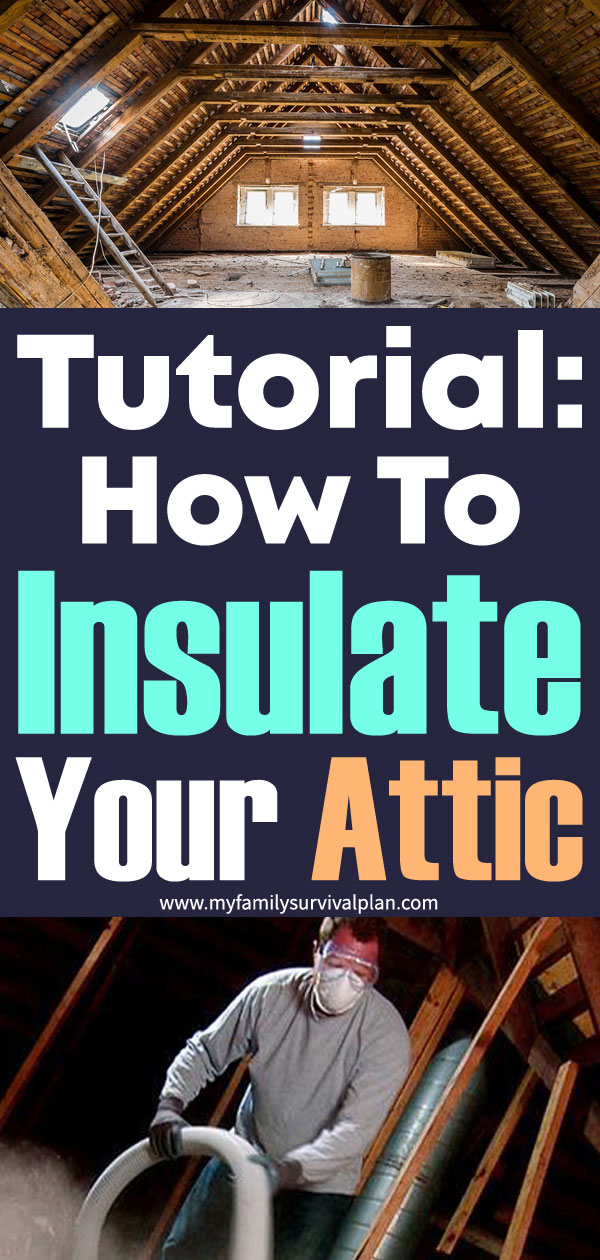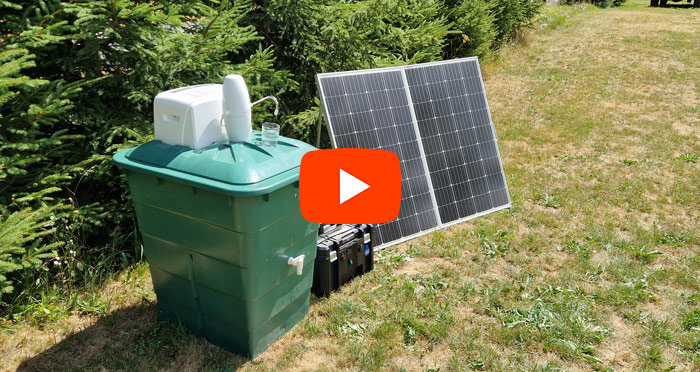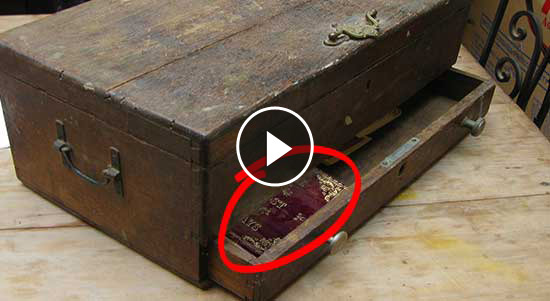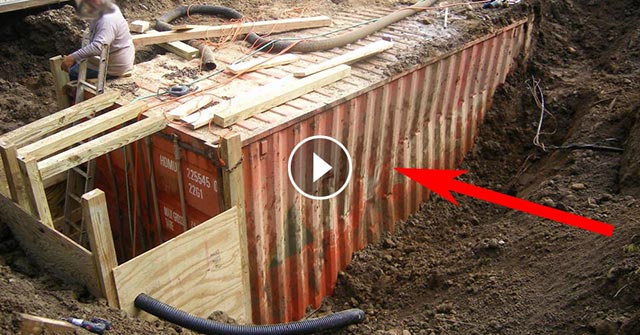Click Here To Join Our Telegram Channel for FREE daily tutorials!

I’ve been wanting to insulate my attic for a while now, but I didn’t want to pay a team of contractors to do it for me. I’m determined to do it myself. So I started off with some serious research, as I always do, and I found a lot of tips and tricks, instructions, dos and don’ts, ups and downs… basically everything you need to know before getting your hands dirty. I selected the information and put it all in a document that covers what you should do before you start insulating, what kind of insulation you need, what tools you’re going to use and how to install it yourself. And now I want to share it with you, in case there’s someone out there who wants to insulate their attic and save some money.
Getting started
A good way to start home sealing is to make a quick sketch of your home’s floor plan. This sketch will serve as a reference point once you get into the attic and will help you locate areas of leakage.
In your sketch, make note of dropped soffits over kitchen cabinets or bath vanities, slanted ceilings over stairways, where walls (interior and exterior) meet the ceiling, and any other dropped-ceiling areas. These areas may have open stud cavities leading directly into the attic and can be huge sources of air leaks.
If upon inspection of your attic you find any of the following conditions, it’s best to hire a contractor to correct these problems before proceeding.
• Wet or damp insulation indicating a leaky roof
• Moldy or rotted attic rafters or floor joists indicating moisture problems
• Kitchen, bathroom, and clothes dryer vents that exhaust moist air directly into the attic space instead of outdoors
• A history of ice dams in the winter (an indication of serious air leaks)
• Little or no attic ventilation
• Knob and tube wiring (pre-1930), which can be a fire hazard when in contact with insulation
• If you have many unsealed and uninsulated recessed “can” lights, special care must be taken when insulating around these fixtures
When choosing insulation, consider R-values, which measure how well insulation holds back heat. R-values depend on material type, thickness and density. The higher the R-value, the better the insulating power. The R-value of various insulating materials is based on test methods set by the American Society of Testing and Materials (ASTM).
Next, decide on the type of insulation. Fiberglass insulation comes in rolls and batts and in various lengths. There are four basic types of insulation:
• Rolls or blankets are flexible products made from fiberglass and rock wool.
• Loose-fill insulation, made of fiberglass, rock wool or cellulose comes in shreds, granules or nodules.
• Rigid foam insulation is more expensive than fiber insulation. However, it works well where there are space constrictions or with higher R-values needed.
• And foam-in-place insulation is blown into walls and limits leaks from air.
You can also go green with recycled cotton or cellulose insulation that’s blown into attics or walls. It’s mostly recycled newspaper and is fire and insect resistant. In either case, always wear protective gear. Ventilation helps moisture control and reduces cooling bills. You can put attic vents along the entire ceiling cavity for better airflow.
Materials Checklist for Sealing Attic Air Leaks
• Batt or roll of unfaced fiberglass insulation and large garbage bags (for stuffing open stud cavities behind kneewalls and in dropped soffits)
• Roll of reflective foil insulation or other blocking material such as drywall or pieces of rigid foam insulation to cover soffits, open walls, and larger holes
• Silicone or acrylic latex caulk & caulk gun for sealing small holes (1/4 inch or less)
• Several cans of expanding spray foam insulation for filling larger gaps (1/4 inch to 3 inches) Special high-temperature (heat-resistant) caulk to seal around flues and chimneys
• Roll of 14-inch wide aluminum flashing to keep insulation away from the flue pipe
• Retractable utility knife and sheet metal scissors
• Tape measure and staple gun (or hammer and nails) to hold covering materials in place
• Safety glasses, gloves, and dust mask (for insulation work as well)
• Flashlight or portable safety light
• Boards to walk on, if needed
• Large bucket to haul materials
Sealing Air Leaks in the Attic
Plug the Big Holes First
Don’t worry about finding and sealing all the little holes in your attic; your biggest savings will come from plugging the large ones. Once in the attic, refer to your sketch to locate the areas where leakage is likely to be greatest: where walls (inner and outer) meet the attic floor, dropped soffits (dropped-ceiling areas), and behind or under attic kneewalls.
Look for dirty insulation — this indicates that air is moving through it. Dropped soffits may be filled or covered with insulation and hard to see. Push back the insulation and scoop it out of the soffits. You will place this insulation back over the soffit once the stud cavities have been plugged and the soffits covered.
If You Have a Finished Attic, Seal Behind the Kneewalls
Finished rooms built into attics often have open cavities in the floor framing under the side-walls or kneewalls. Even though insulation may be piled against or stuffed into these spaces, they can still leak air. Again, look for signs of dirty insulation to indicate air is moving through. You need to plug these cavities in order to stop air from traveling under the floor of the finished space.
Caution: Some attics have vermiculite insulation, which may contain asbestos, a health hazard. Vermiculite is a lightweight, pea-size, flaky gray mineral. Don’t disturb vermiculite insulation unless you’ve had it tested by an approved lab to be sure it doesn’t contain asbestos. Contact your local health department for the name of an approved lab.
Keep Insulation Away from Heat Sources
Keep a 3″ safe zone between insulation and heat sources like heating and cooling lines, recessed lights or chimneys. If building new, help reduce utility bills by insulating exterior walls to the best energy efficient level. Homes even 10 years old may be below today’s recommendations, so add insulation where it’s needed in crawl spaces. When adding to an existing insulation, make sure you use unfaced fiberglass or mineral wool insulation.
That’s pretty much it about attic insulation. If you’ve got any personal stories of your own, please share them in the comments section.
Image For Pinterest:

Graphic – www.myfamilysurvivalplan.com. Images – Pixabay (PD)
This Crazy Off Grid Device Literally Makes Drinkable Water From Fresh Air:
According to NASA, the U.S. is expecting a 100-YEAR LONG MEGADROUGHT.
It's already begun. Ask the farmers in California. They know.
Every survivalist knows that water is of critical importance. You NEED an independent water source that you can count on!
As an interesting "survival rehearsal" - imagine that you turned the tap on right now and nothing came out. How long would you last?
But what if there was another water source literally hidden in plain sight. That's right, I'm talking about the atmosphere!
The amazing thing about getting water from the natural moisture in the air... is that it is ALWAYS available.
This gives you real water security!
Learn more about how to tap into "Nature's secret water reservoir" and stay hydrated when TSHTF!
Watch the video:
😳 What Tinnitus Does To Your Brain Cells (And How To Stop It)
After 47 years of studies and countless brain scans done on more than 2,400 tinnitus patients, scientists at the MIT Institute found that in a shocking 96% of cases, tinnitus was actually shrinking their brain cells.
As it turns out, tinnitus and brain health are strongly linked.
Even more interesting: The reason why top army officials are not deaf after decades of hearing machine guns, bombs going off and helicopter noises…
Is because they are using something called "the wire method", a simple protocol inspired by a classified surgery on deaf people from the 1950s...

I Can't Help Showing This Off:
If you haven't heard of Claude Davis yet do yourself a huge favor and watch this video.
One of the smartest guys I ever had the pleasure of meeting, Claude set-up a unique prepping system that changed his life forever.
I already tried it myself and let me tell... you I was completely blown away... His surprising tactics could make your life easier and give you the peace of mind you deserve.
Don't just take my word for it... watch his short video and decide for yourself.

Most People Don't Have The Guts To Try This:
An amazing discovery in an abandoned house in Austin, Texas: A lost book of amazing survival knowledge, believed to have been long vanished to history, has been found in a dusty drawer in the house which belonged to a guy named Claude Davis.
Remember... back in those days, there was no electricity... no refrigerators... no law enforcement... and certainly no grocery store or supermarkets... Some of these exceptional skills are hundreds of years of old and they were learned the hard way by the early pioneers.
>> Click here to find out about them now
We've lost to history so much survival knowledge that we've become clueless compared to what our great grandfathers did or built on a daily basis to sustain their families.
Neighbors said that for the last couple of years Claude has tried to unearth and learn the forgotten ways of our great-grandparents and claimed to have found a secret of gargantuan proportions. A secret that he is about to reveal together with 3 old teachings that will change everything you think you know about preparedness:
>>> Click Here To Watch His Short Video <<<

More Off-Grid And Survival Resources:

What REALLY Happens When You Bury a Shipping Container? (Hint: It's A Bit Crazy...)
Shipping containers are all the rage - but if you are thinking about buying one, you MUST watch this video first:
There's a general belief that if you bury a shipping container you can create an awesome root cellar / storm shelter / survival bunker.
But is a shipping container strong enough to handle the pressure?
Watch the video to see what happens:
What Really Happens When You Bury a Shipping Container? (Click To Watch Video)








